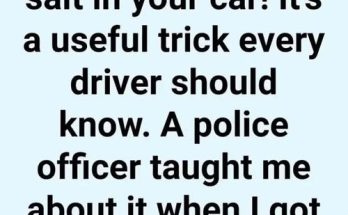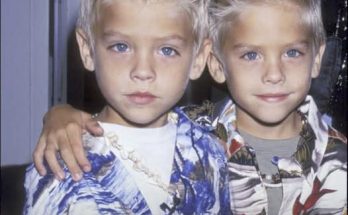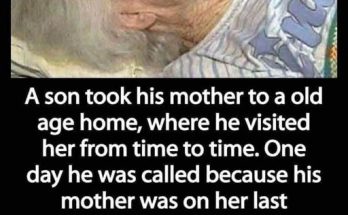You wake up one morning, and there it is—a small, tingling patch right at the corner of your lip. You might think it’s just a pimple or dry skin. But within a day or two, it turns into a blister. Painful, red, and hard to ignore.
If this sounds familiar, you’re not alone. You could be dealing with a cold sore, also known as a fever blister. For many older adults, cold sores are more than just a nuisance—they’re a frustrating, often embarrassing reminder of something they thought they left behind decades ago.
And while they might seem harmless, these blisters can be a warning sign that the herpes simplex virus is active—and contagious.
What Exactly Is a Cold Sore?
Cold sores are small, fluid-filled blisters that usually appear around the lips, mouth, or nose. They’re caused by the herpes simplex virus type 1 (HSV-1), which is extremely common and highly contagious.
Once you’ve been infected, the virus never really leaves your body. Instead, it hides quietly in your nerve cells, sometimes for years, and reactivates when triggered by stress, illness, or other lifestyle factors.
“But I haven’t kissed anyone in decades. How could I have this?”
Most people are exposed to HSV-1 in childhood or early adulthood, often through something as simple as sharing a drink, a kiss from a family member, or using the same utensils. By age 60, it’s estimated that more than 60% of Americans carry the virus—even if they’ve never had visible symptoms.
What Triggers Cold Sore Outbreaks in Older Adults?
One of the frustrating things about HSV-1 is how unpredictable it can be. You might go years without a single cold sore, then suddenly experience a flare-up—often at the worst possible time.
Here are some of the most common triggers for cold sores, especially in older adults:
- Stress – Emotional or physical stress can suppress the immune system, giving the virus an opening.
- Illness – Colds, fevers, or respiratory infections can stir the virus from dormancy.
- Weakened Immune System – As we age, our immune defenses naturally decline, making flare-ups more likely.
- Sun Exposure – UV rays can irritate the skin on your lips and reactivate HSV-1.
- Fatigue – Poor sleep or exhaustion can also leave your body vulnerable.
- Hormonal Changes – While more common in younger women, hormone fluctuations can still play a role.
Knowing what sets off your outbreaks is the first step toward managing and preventing cold sores in the future.
What Does a Cold Sore Look and Feel Like?
Most cold sores give you a warning sign before they appear—if you know what to look for.
Here’s what typically happens:
Early Symptoms (24–48 hours before a blister forms):
- A tingling, itching, or burning sensation on or near your lips
- Mild redness or tightness in the area
Blister Stage:
- Small clusters of blisters appear, usually filled with clear fluid
- They’re often painful, especially when touched or irritated by food or drink
Scabbing and Healing:
- Blisters burst and form a yellowish crust or scab
- The area may remain sore or tender
- Healing can take anywhere from 2 to 4 weeks, depending on your immune health
Early treatment is key. The faster you act, the better your chances of reducing the severity and length of an outbreak.
How to Treat Cold Sores: Prescription and Over-the-Counter Options
While there’s no permanent cure for HSV-1, several treatments can reduce the discomfort and help speed up recovery.
Prescription Antiviral Medications:
These work best if taken as soon as symptoms begin. Your doctor may prescribe:
- Acyclovir
- Valacyclovir (Valtrex)
- Famciclovir
These medications can shorten healing time and lessen the risk of spreading the virus to others.
Over-the-Counter Cold Sore Treatments:
- Docosanol (Abreva): FDA-approved for reducing cold sore duration
- Lidocaine or benzocaine creams: Help numb the area and ease pain
- Ibuprofen or acetaminophen: Reduce inflammation and soreness
Talk to your doctor or pharmacist before starting any new treatment, especially if you’re taking other medications or managing chronic conditions.
Natural Cold Sore Remedies That Actually Work
Many older adults prefer natural remedies for cold sores, especially if they’re dealing with other health concerns.
Some of the most gentle and effective options include:
- Aloe Vera – Soothes inflamed skin and promotes healing
- Lemon Balm (Melissa officinalis) – A natural antiviral that may reduce outbreak frequency
- Tea Tree Oil – Known for its antiviral and antiseptic qualities (always dilute before applying)
- Petroleum Jelly or beeswax lip balms – Keep the area moist and prevent cracking
Always do a patch test before using essential oils or herbal products, and consult your doctor if you’re unsure whether they’re safe for you.
How to Prevent Cold Sores from Coming Back
While you can’t get rid of HSV-1 completely, you can make lifestyle changes to reduce the number of outbreaks—and their severity.
Try These Prevention Strategies:
- Get enough rest – Aim for 7–8 hours a night
- Stay hydrated – Your skin (and immune system) works better when you’re well-hydrated
- Eat a balanced diet – Focus on immune-supporting foods like leafy greens, citrus fruits, and lean proteins
- Use SPF lip balm – UV rays can trigger outbreaks, even in winter
- Manage your stress – Try deep breathing, daily walks, prayer, or meditation
- Avoid sharing – Lipstick, lip balm, utensils, cups, towels—these can all spread the virus
How Cold Sores Spread (and How to Keep Loved Ones Safe)
HSV-1 is highly contagious, especially when blisters are present. But the virus can still spread even when no symptoms are visible.
To protect yourself and others:
- Avoid kissing or close contact during an outbreak
- Don’t share food, drinks, or personal items
- Wash hands frequently—especially before touching your face or eyes
- Use separate towels and pillowcases during flare-ups
If you’re around grandchildren, be especially cautious. Children and infants can catch HSV-1 easily and may develop more severe symptoms.
When Should You Call a Doctor?
Most cold sores heal on their own, but there are times when it’s important to seek medical attention:
- You get frequent outbreaks (more than 6 per year)
- The sores are unusually large, painful, or long-lasting
- You notice sores near or in your eyes
- You have diabetes, cancer, or other conditions that weaken your immune system
- You’re not sure whether it’s a cold sore or something more serious
Remember, you deserve to feel comfortable in your own skin, and there’s no shame in asking for help.
Is There Hope for a Cure?
Yes. Scientists are making exciting progress in treating HSV-1.
Researchers are exploring gene editing, new antiviral therapies, and even vaccines designed to prevent cold sore outbreaks entirely. While these are still in early stages, they offer hope for a future where lip blister treatment is not just about relief—but complete prevention.
Until then, the best tools we have are education, early action, and self-care.
It’s Just a Cold Sore—But It Matters
If you’ve lived with cold sores most of your life, you know how painful—and isolating—they can be. The sting isn’t just physical; it can hurt your confidence and make you feel like hiding.
But you’re not alone.
Millions of older Americans deal with cold sores. With the right knowledge, effective treatments, and thoughtful prevention, you can reduce outbreaks, heal faster, and protect the people you care about.
So the next time you feel a tingle or see a blister forming—don’t ignore it.
That little warning might be your body’s way of asking for care.



